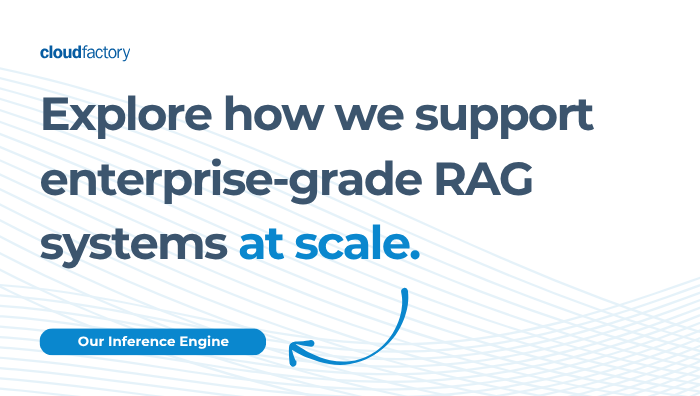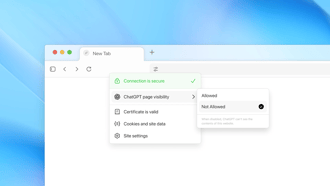Retrieval-Augmented Generation (RAG) has quickly become one of the most widely adopted patterns for building large language model (LLM) applications—particularly among enterprise teams. It promises the best of both worlds: the natural language fluency of LLMs, grounded in up-to-date, domain-specific information drawn from external sources.
Instead of relying solely on a model’s static internal knowledge, RAG injects relevant context at query time. This architecture has been hailed as a powerful way to reduce hallucinations, improve accuracy, and increase the explainability of AI responses. For enterprise use cases—from internal knowledge bases and customer support to legal analysis and healthcare assistants—those benefits aren’t just nice to have; they’re critical.

But as RAG enters the implementation phase at more organizations, the cracks are starting to show.
The RAG Pipeline Promise—and Why It’s Falling Apart
In theory, RAG is simple: Store your documents in a vector database, build a retriever that pulls in relevant chunks when a user asks a question, and then let your LLM generate an answer based on those chunks. It’s an elegant solution to a real problem.
In practice, however, the pipeline often fails to deliver. Enterprise teams are finding that their RAG systems sound impressive but aren’t actually helpful. Answers cite irrelevant documents. Hallucinations still slip through. Confidence is low. And performance doesn’t improve over time.
What’s going wrong?
It turns out that each component of the RAG pipeline introduces opportunities for failure—and when those failures compound, the system breaks down. Let’s walk through the most common issues we’re seeing in real-world deployments.
1. Low-Quality Document Stores
Most RAG systems are only as good as the data they retrieve from—but few teams start with a carefully curated, use-case-aligned document base.
Instead, many systems are fed sprawling collections of internal PDFs, slide decks, emails, blog posts, or product docs. These repositories are rarely cleaned or filtered for quality. There may be multiple versions of the same source. Important metadata might be missing. Content could be too long, too short, or entirely irrelevant to the types of questions users are actually asking.
If your vector store is bloated with junk, your retrieval will reflect that—and your LLM will be asked to generate answers based on noise.
2. Poor Retrieval Strategies
Retrieval is the heart of the RAG pipeline—and it’s often the weakest link.
Even when the document base is solid, default retrieval strategies (like top-k similarity search) can surface context that’s only tangentially related to the question. You might retrieve a paragraph that shares some keywords but doesn’t actually answer the user’s intent. Or worse, you might miss the most relevant chunk because it wasn’t embedded properly or was buried inside a longer document that wasn’t split effectively.
Without smart chunking, embedding validation, and tuned search parameters, retrieval becomes more of a guessing game than a reliable source of truth.
3. Lack of Reranking
Most teams don’t stop to evaluate which of the retrieved chunks are actually the most useful for answering a specific question. Instead, they pass the top-k results directly to the LLM and hope it figures it out.
This is where reranking comes in. A reranker (often another model trained to score relevance or usefulness) can help prioritize which documents get used in generation. Without one, the LLM may rely on the wrong sources, leading to off-topic or misleading answers.
Skipping the reranking step may speed up your pipeline—but it also introduces serious risk in high-stakes applications.
4. No Evaluation or Feedback Loops
Perhaps the most critical—and most overlooked—failure point in RAG systems is the lack of human oversight.
Most RAG pipelines are deployed without a systematic way to evaluate how well they’re working. Are the retrieved documents actually useful? Does the generated answer align with the context? Is the source cited correctly? Was anything hallucinated?
Without this evaluation, teams have no way to measure performance, detect regressions, or guide improvements. The pipeline becomes a black box—one that slowly drifts away from accuracy over time.
This is where most enterprise teams stall. They’ve built the technical infrastructure, but they’re missing the operational workflows to ensure it delivers consistent, high-quality output. And that’s where human-in-the-loop systems come in.
Fixing RAG: What Reliable Pipelines Actually Look Like
Building a reliable RAG system isn’t just about better tooling. It’s about better process—and human input plays a key role.
Reliable RAG pipelines start with a clear understanding of user intent and use case alignment. That means curating a document base that actually answers the kinds of questions users ask. It means preprocessing that content into clean, well-structured chunks. And it means building retrieval strategies that are tested, validated, and regularly improved.
But more importantly, it means introducing feedback loops that close the gap between intent and output.
This is where evaluation frameworks like RAGAS have started to gain traction. They help teams measure retrieval precision, answer groundedness, and hallucination rates—so you’re not relying on gut feel or anecdotal reports.
Still, tools like RAGAS can’t do everything alone. Most metrics require labeled data. That means humans—people who can judge whether a retrieved paragraph actually supports the answer, or whether the LLM has made a leap in logic.
How CloudFactory Helps Keep RAG on Track
At CloudFactory, we specialize in building human-in-the-loop workflows that scale. For teams deploying RAG systems in production, we provide the structure, tools, and workforce to close the gap between theory and practice.
Here’s how we help:
- Context Evaluation at Scale
Our teams assess whether retrieved content is actually helpful, on-topic, and relevant to a user’s question. This feedback helps tune your retriever, embeddings, and document structure for better results. - Ground Truth Creation for Benchmarking
We create datasets with known question-context-answer triples so you can evaluate retrieval performance and fine-tune rerankers or generators. - Exception Handling and Oversight
We flag outputs that are misleading, unsupported, or low-confidence—giving your team early visibility into risk and quality issues before users encounter them. - Document Curation and Structuring
We help teams preprocess and organize unstructured content, ensuring that your knowledge base is optimized for retrieval from the start.
Whether you’re in early-stage prototyping or refining a production deployment, CloudFactory gives you the operational muscle to make your RAG system truly work.
The Takeaway: RAG Isn’t Plug-and-Play—It’s a Workflow
Enterprises that rely on LLMs to generate reliable, context-aware answers need more than just technical infrastructure. They need operational support.
RAG pipelines are powerful—but they’re also fragile. Without thoughtful document preparation, precise retrieval, quality reranking, and structured human feedback, they fail to deliver on their promise. Hallucinations persist. Users lose trust. And performance flatlines.
If your RAG system is underperforming—or if you’re just getting started—now is the time to build the feedback loops that will make it reliable. CloudFactory provides the flexible workforce and expert workflows you need to evaluate, refine, and scale your system with confidence.
Let’s talk about how to turn your pipeline into a product users can trust.
.png?width=1563&height=1563&name=Untitled%20design%20(38).png)




.png?width=1563&height=1563&name=Untitled%20design%20(30).png)



.png?width=1563&height=1563&name=Untitled%20design%20(33).png)


.png?width=1563&height=1563&name=Untitled%20design%20(34).png)














